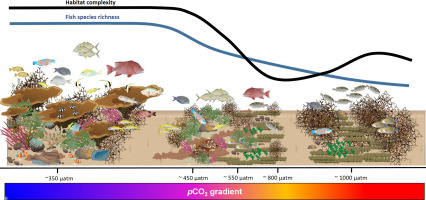
A new study compares the results from the latest climate models and older versions with respect to projections of future drought conditions all over the world (Earth’s Future – AGU pubs). There is considerable variation among regions, with those of most concern named in this passage: “… the latest state‐of‐the‐art climate model projections from CMIP6 show robust drying and increases in extreme drought occurrence across many regions by the end of the 21st century, including western North America, Central America, Europe and the Mediterranean, the Amazon, southern Africa, China, Southeast Asia, and Australia. While these changes occur even under the most aggressive climate mitigation pathways, the models show substantial increases in the extent and severity of this drying under higher warming levels…..adaptation to a new, drier baseline will likely be required even under the most optimistic scenarios.” In addition, a quite interesting—and troubling—point is made comparing drought conditions to precipitation, both of which are generally expected to be increasing as they alternate: “Soil moisture and runoff drying is more widespread and robust than precipitation, with the severity increasing strongly with warming.”
https://agupubs.onlinelibrary.wiley.com/doi/abs/10.1029/2019EF001461
An analysis of the globe-wide food system that is effectively now in place shows an extraordinary degree of vulnerability to climate disturbances (The Conversation). The three authors use computer simulations to expand on how changes made since the time of the Dust Bowl would have worsened its actual outcome. For example, “Food trade has been increasing rapidly since the mid 1900s, and 80% of the world population now lives in countries that import more food calories than they export…..a decline in US wheat production of the same magnitude as occurred during the Dust Bowl (about 30% over four consecutive years), would deplete nearly all wheat reserves in the US and reduce global stocks by 31%. Since the US is one of the world’s largest exporters of wheat and has many trade links, nearly all countries would be affected.”
https://theconversation.com/we-simulated-how-a-modern-dust-bowl-would-impact-global-food-supplies-and-the-result-is-devastating-133662
Phytoplankton are responding to climate change in ways that are critically important, yet widely underrated (The Revelator). Their story needs to be told, and this article is the best I have ever seen for performing that task with a full summary of reasons. Concerning their future, one expert has reached this conclusion: “Global modeling studies using historical data have revealed declines in phytoplankton over the last few decades, but with variability between oceans and regions, and even some patches where phytoplankton have increased….Based on these data, studies using computer models to project future conditions conclude that in many parts of the ocean, phytoplankton will decline as seas warm and water mixing patterns change.”
https://therevelator.org/phytoplankton-climate-change/
New materials show great promise for improving onboard storage of the hydrogen required by fuel-cell vehicles (Northwestern University). “The designer materials, a type of a metal-organic framework (MOF), can store significantly more hydrogen and methane than conventional adsorbent materials at much safer pressures and at much lower costs…..Thanks to its nanoscopic pores, a one-gram sample of the Northwestern material (with a volume of six M&Ms) has a surface area that would cover 1.3 football fields.” That sounds like a truly revolutionary development, adding yet more woe to the problems of the oil industry?
https://phys.org/news/2020-04-gas-storage-method-next-generation-energy.html
Carl